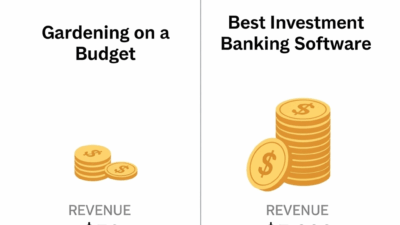In the ever-evolving world of digital marketing, standing out on search engines is more competitive than ever. Businesses constantly look for ways to boost their rankings, increase domain authority, and drive more organic traffic. Among the most powerful tactics in an SEO expert’s toolkit is the guest post backlink—a strategy that, when executed right, can drive real results without gaming the system. You’re in the right place if you’ve heard the term tossed around in SEO circles but aren’t sure what it means or how to leverage it effectively.
In this article, we’ll explore guest post backlinks, explaining how they function, why they’re impactful, and how you can employ them ethically and strategically to enhance your site’s visibility. We’ll also discuss crucial considerations, common pitfalls, and effective ways to measure their actual impact while upholding the highest ethical standards in SEO.
What is a Guest Post Backlink?
To kick things off, let’s break down the term itself. A guest post backlink is a hyperlink placed within a guest article you’ve written for another website. The link links to your website, usually to a relevant blog post or service page. This serves two purposes: you contribute valuable content to the host site, and in return, you get a link that can boost your SEO.
Backlinks are a cornerstone of search engine algorithms. They act as a vote of confidence from one site to another. The more high-quality links your site earns, the more likely it is to rank well in search engine results pages (SERPs).
A well-placed backlink in a relevant and authoritative guest post signals to search engines that your content is trustworthy and valuable—precisely the kind of content they want to promote.
Why Guest Post Backlinks Matter for SEO
Let’s cut to the chase—backlinks are the gold standard in SEO. But not just any backlinks. Those links’ quality, relevance, and placement truly matter. This is where the art of guest posting shines.
Search engines like Google see backlinks as one of the strongest signals for authority. When you earn a backlink through a guest post on a reputable site, it tells Google that another authority vouches for your content. This boosts your credibility, increases domain authority, and helps push your pages higher in search rankings.
But it’s not just about rankings. Guest post backlinks can also drive targeted referral traffic—visitors who are genuinely interested in what you offer because they came from content directly related to your niche.

The Difference Between Good and Bad Backlinks
Not all backlinks are created equal, especially those gained through guest posts. Let’s explore what makes a backlink good or bad.
Good Guest Post Backlinks:
- Come from high-authority websites in your niche
- Are embedded naturally within relevant content
- Point to a page that adds value to the reader
- Are earned through real editorial approval
Bad Guest Post Backlinks:
- Come from link farms or spammy blogs
- Are added in bulk or unnaturally
- Have no contextual relevance
- Are paid for without proper disclosure
Google’s algorithms are intelligent. They can easily detect link manipulation and penalize sites that violate their guidelines. So, always aim for quality, not quantity.
Finding the Right Guest Post Opportunities
Before writing anything, you must find websites that accept guest posts and are relevant to your niche. But don’t just aim for any blog that allows contributors. Be selective.
Here are key factors to consider when identifying a good guest post opportunity:
- Domain Authority (DA): Higher DA usually means better link equity.
- Traffic: A site with consistent traffic means more exposure for your content and link.
- Relevance: Make sure the site’s content aligns with your topic.
- Engagement: Check comments, social shares, and user activity. It indicates an active audience.
Start by searching Google using queries like:
- “write for us” + your niche
- “guest post guidelines” + topic
- “submit a guest post” + industry
Then, vet each site for quality before pitching your ideas.
Writing a Guest Post That Gets Accepted
Pitching is just step one. Once you land a guest post opportunity, the real work begins. You aim to provide real value, not just sneak in a backlink.
A high-performing guest post should:
- Be original and well-written
- Address a relevant topic for the host blog’s audience
- Offer practical insights, tips, or case studies
- Include a backlink in a way that’s natural and helpful
When your content resonates with the audience, your link becomes more credible—and valuable in the eyes of search engines.

Where and How to Place the Backlink
Backlink placement can significantly impact its effectiveness. The more natural and contextually relevant the link is, the better it performs.
Here are some ideal backlink placements in a guest post:
- In the body of the article: This is where editorial backlinks carry the most weight.
- Contextual reference: When you refer to a concept or solution you’ve covered in detail on your site.
- Author bio (if allowed): Some sites restrict in-body links, but include one in your bio.
Avoid stuffing multiple links or using spammy anchor text. Use branded, generic, or long-tail anchor text that fits the sentence and gives readers a clear idea of what to expect.
Anchor Text: What It Is and Why It Matters
Anchor text is the clickable text used in a hyperlink. For example, in the sentence “Check out our SEO strategy guide,” the phrase “SEO strategy guide” is the anchor text.
Here are common types of anchor text:
- Exact match: Uses the exact keyword (e.g., “best SEO tools”)
- Partial match: Includes a variation of the keyword (e.g., “guide to SEO tools”)
- Branded: Includes your brand name (e.g., “Solytec App”)
- Generic: Non-descriptive (e.g., “click here” or “this post”)
Using a natural mix of anchor types prevents over-optimization and keeps your backlink profile organic.
Measuring the Impact of Guest Post Backlinks
Once your guest post goes live, it’s time to track the results. Here’s how you can measure the effectiveness of your backlink strategy:
- Referral traffic: Use Google Analytics to see how many visitors are coming from your guest post.
- Search rankings: Track keyword positions over time using tools like SEMrush or Ahrefs.
- Domain authority: Monitor your site’s authority with Moz or Ahrefs to see long-term improvements.
- Link indexation: Make sure search engines are crawled and indexed your link.
Remember, SEO is a long game. One backlink won’t move the needle overnight, but consistent quality efforts will add up.
Guest Post Backlink Best Practices
Here’s a quick checklist to keep your guest posting strategy clean and effective:
- Always prioritize quality content.
- Only link where it makes sense contextually.
- Avoid over-optimization of anchor text.
- Don’t overdo it—too many backlinks too fast can raise red flags.
- Follow Google’s Webmaster Guidelines.
- Focus on relevance over link metrics.
When done right, guest post backlinks can be a sustainable, white-hat SEO tactic that grows your site’s authority and visibility.
Common Mistakes to Avoid
Even with the best intentions, it’s easy to slip up. Let’s cover some frequent guest post backlink mistakes:
Buying links disguised as guest posts violates Google’s rules and could lead to penalties.
Spinning or duplicating content: Your guest post must be original and tailored to the host site.
Overlinking to your own site: Limit yourself to 1-2 backlinks per post unless otherwise agreed.
Ignoring the host site’s audience: Your content should align with their tone, style, and interests.
Using low-quality sites: Backlinks from spammy or irrelevant sites will not help—and could hurt—your SEO.
Avoid these pitfalls and stay focused on ethical, value-driven strategies.
The Future of Guest Post Backlinks
As SEO continues to evolve, one thing remains constant: search engines reward value. Guest posting isn’t a quick fix or hack—it’s a legitimate marketing approach rooted in content and relationships.
In the coming years, search engines will scrutinize unnatural link patterns more closely. That’s why the future of guest posting is all about transparency, collaboration, and relevance.
Instead of considering guest posting a link-building tactic, treat it as a content marketing and branding opportunity. When you build genuine partnerships and contribute valuable content, the backlinks become a natural byproduct.
Conclusion
When done correctly, guest post backlinks remain one of the most reliable and sustainable ways to improve your SEO. They help you rank better, connect you with new audiences, build your brand, and drive qualified traffic to your site.
The key is to focus on quality over quantity, value over self-promotion, and relevance over metrics. By mastering the art of guest posting, you’ll set your website up for long-term success in an increasingly competitive digital landscape.







